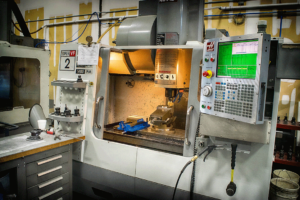
Applications of precision machining range from production of automotive parts, aerospace engineering to complex surgical procedures. The last decade has witnessed an exponential growth in the application of precision machining to the point 3-D production of work pieces is possible.
This process is not only used to produce metallic products but also other materials like glass and wood.
There are three major processes involved in precision machining:
Turning
Milling
Drilling and Boring
Turning
Turning is the most common used method for cutting metals where by a work piece is rotated about its axis as cutting tools shear away unwanted materials. Since turning produce axially symmetrical products shearing can be done on both the internal and external substrates. General purpose lathe which is the most common turning equipment basically operates by holding the work piece in position while it rotates, holding and moving the cutting tools.
External turning involves reducing the work piece to a specific diameter along the axis, produce a taper along the axis, chamfering to remove sharp edges and threading among others.
When it comes to internal turning a reamer is used to finish the drilled holes to the exact size. This is done by attaching the rotating work piece to a non-rotating part of the drill mounted on the tail stock. Proper lubrication and right cutting tools should be used to prevent the formation of long chips which interfere with the work progress.
Milling
Milling machines were initially developed to help man accurately duplicate parts. They remove unwanted material from the work piece by use of a revolving cutting tool known as the milling cutter. Milling machines are classified as either horizontal or vertical depending on the orientation of the spindle. They are further classified as planer-type, knee-type, manufacturing type and ram-type. Milling machines are provided with several T-slots for mounting various devices hence an elongated table.
Drilling
Drilling is the process of making round holes on a work pieces using a rotating cylindrical drill bit with two cutting edges. Drilling can be compared to milling and turning however it requires chip breaking and removal of chips.
Since precision machining restricts the dimensions of the holes the drilling and removal of chips should be done cautiously. Drilling can be classified according to the depth of the holes created. Deep-hole drilling is a method used to make holes up to 150 times the diameter of the drill.
Other operations closely related with drilling include counter-boring, trepanning and reaming. Counter-boring is the expansion of an already drilled hole to provide a stepped hole used to seat bolt heads so that they don’t protrude to the surface.
Trepanning is used in making larger diameter holes where by a ring is drilled at the periphery leaving a core at the center.